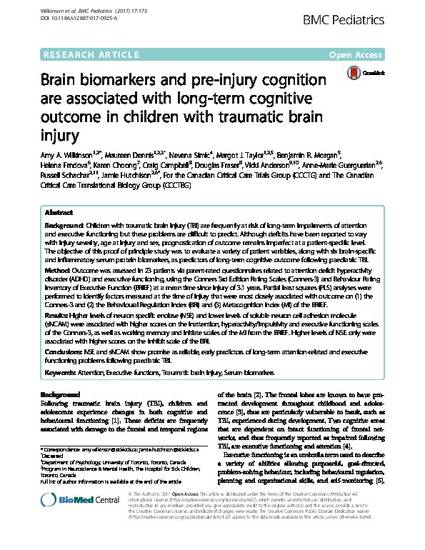
BACKGROUND: Children with traumatic brain injury (TBI) are frequently at risk of long-term impairments of attention and executive functioning but these problems are difficult to predict. Although deficits have been reported to vary with injury severity, age at injury and sex, prognostication of outcome remains imperfect at a patient-specific level. The objective of this proof of principle study was to evaluate a variety of patient variables, along with six brain-specific and inflammatory serum protein biomarkers, as predictors of long-term cognitive outcome following paediatric TBI.
METHOD: Outcome was assessed in 23 patients via parent-rated questionnaires related to attention deficit hyperactivity disorder (ADHD) and executive functioning, using the Conners 3rd Edition Rating Scales (Conners-3) and Behaviour Rating Inventory of Executive Function (BRIEF) at a mean time since injury of 3.1 years. Partial least squares (PLS) analyses were performed to identify factors measured at the time of injury that were most closely associated with outcome on (1) the Conners-3 and (2) the Behavioural Regulation Index (BRI) and (3) Metacognition Index (MI) of the BRIEF.
RESULTS: Higher levels of neuron specific enolase (NSE) and lower levels of soluble neuron cell adhesion molecule (sNCAM) were associated with higher scores on the inattention, hyperactivity/impulsivity and executive functioning scales of the Conners-3, as well as working memory and initiate scales of the MI from the BRIEF. Higher levels of NSE only were associated with higher scores on the inhibit scale of the BRI.
CONCLUSIONS: NSE and sNCAM show promise as reliable, early predictors of long-term attention-related and executive functioning problems following paediatric TBI.
Available at: http://works.bepress.com/craig-campbell/1/

Under Creative Commons Attribution License